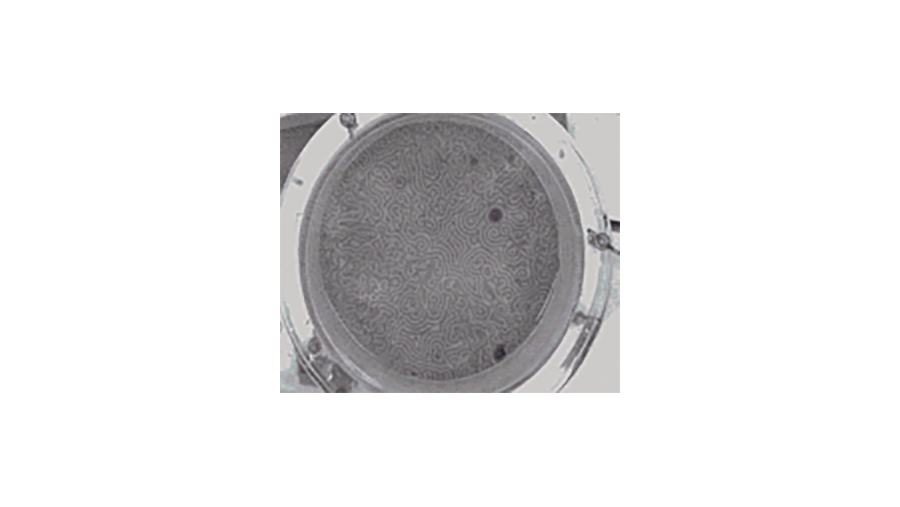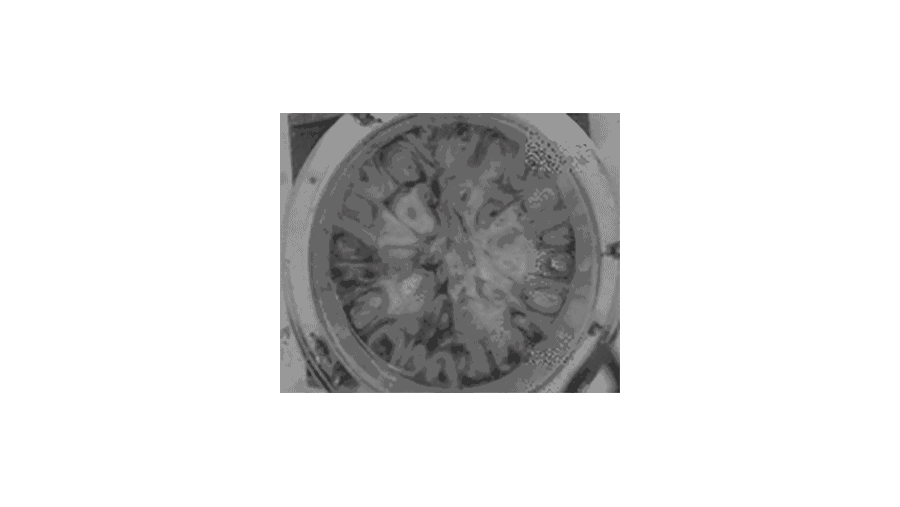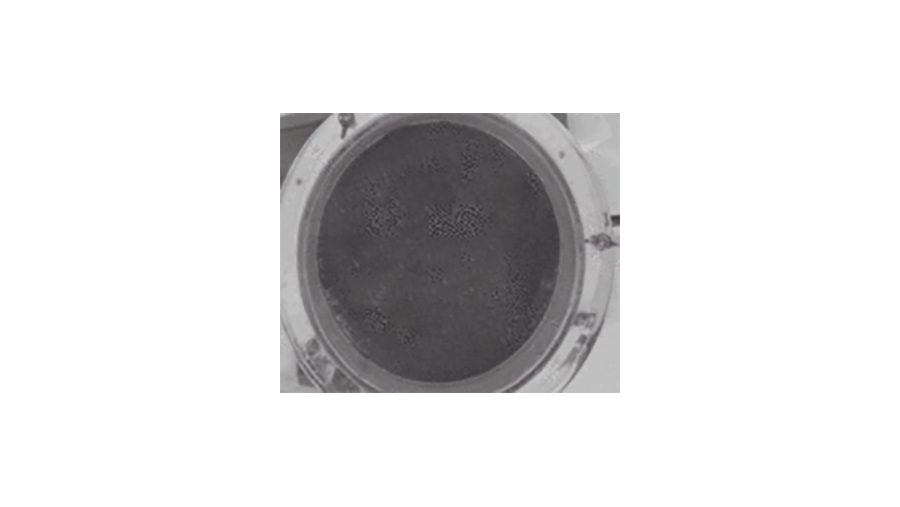Reaction-diffusion systems exhibit a great variety of patterns including target and spiral waves. However, in nature additional transport processes, such as advection, are frequently found. Reaction-diffusion-advection systems are a relevant concept to describe processes involving mixing in chemistry and biology. In our laboratory, we study the influence of a chaotic flow on the chemical Belousov-Zhabotinsky reaction. We induce the chaotic flow using the Faraday instability that appears in a vertically vibrated fluid layer. The Faraday experiment is a classic experiment in fluid dynamics that has received a lot of attention due to the nontrivial nature of the standing waves observed in the free surface (Faraday instability).
As a function of the external forcing (amplitude and frequency of vertical vibration) four regions of different patterns in the active media where found:
- When external forcing is weak patterns similar to the unforced system are observed (in the following g denotes the gravity acceleration):

- Increasing external forcing a filamentary structure is observed in the active media patterns. Filaments follow the velocity field of the fluid revealing the presence of vortical structures in this field.


- Stronger forcing induces the emergence of advective phase waves in the chemical reaction with a period similar to the period of the oscillating reaction.

- For even stronger forcing no patterns are observed in the active media. As chemical patterns are recovered when external vibration is stopped (this is also true in the other regions) in this region the system seems to become monostable.

References:
Chemical wave dynamics in a vertically oscillating fluid layer. Guillermo Fernández-García, D.I. Roncaglia, V. Pérez-Villar, Alberto P. Muñuzuri and Vicente Pérez-Muñuzuri. PHYSICAL REVIEW E 77, 026204 (2008).